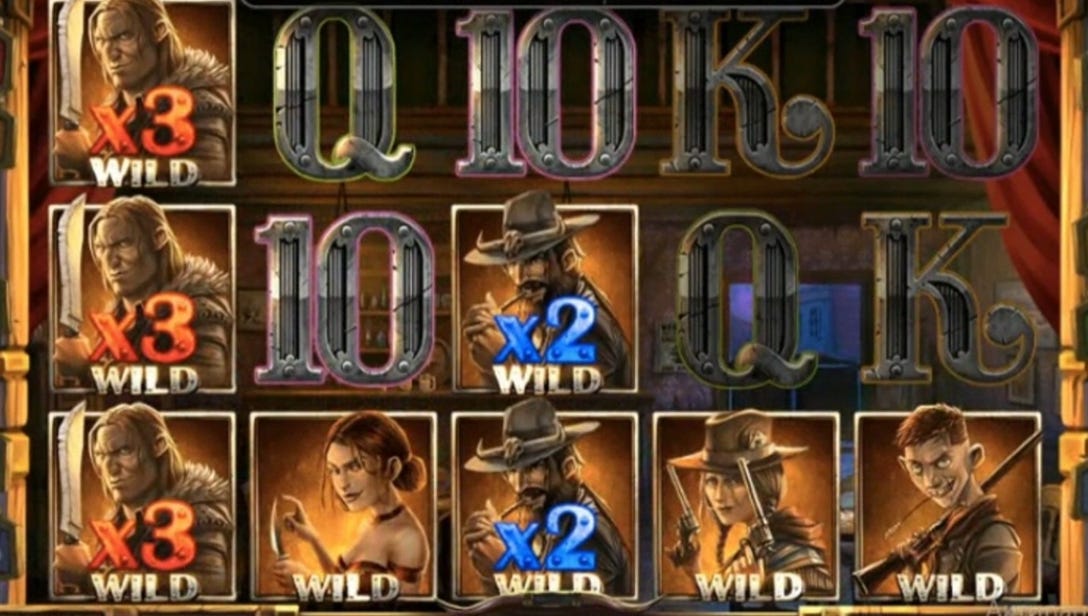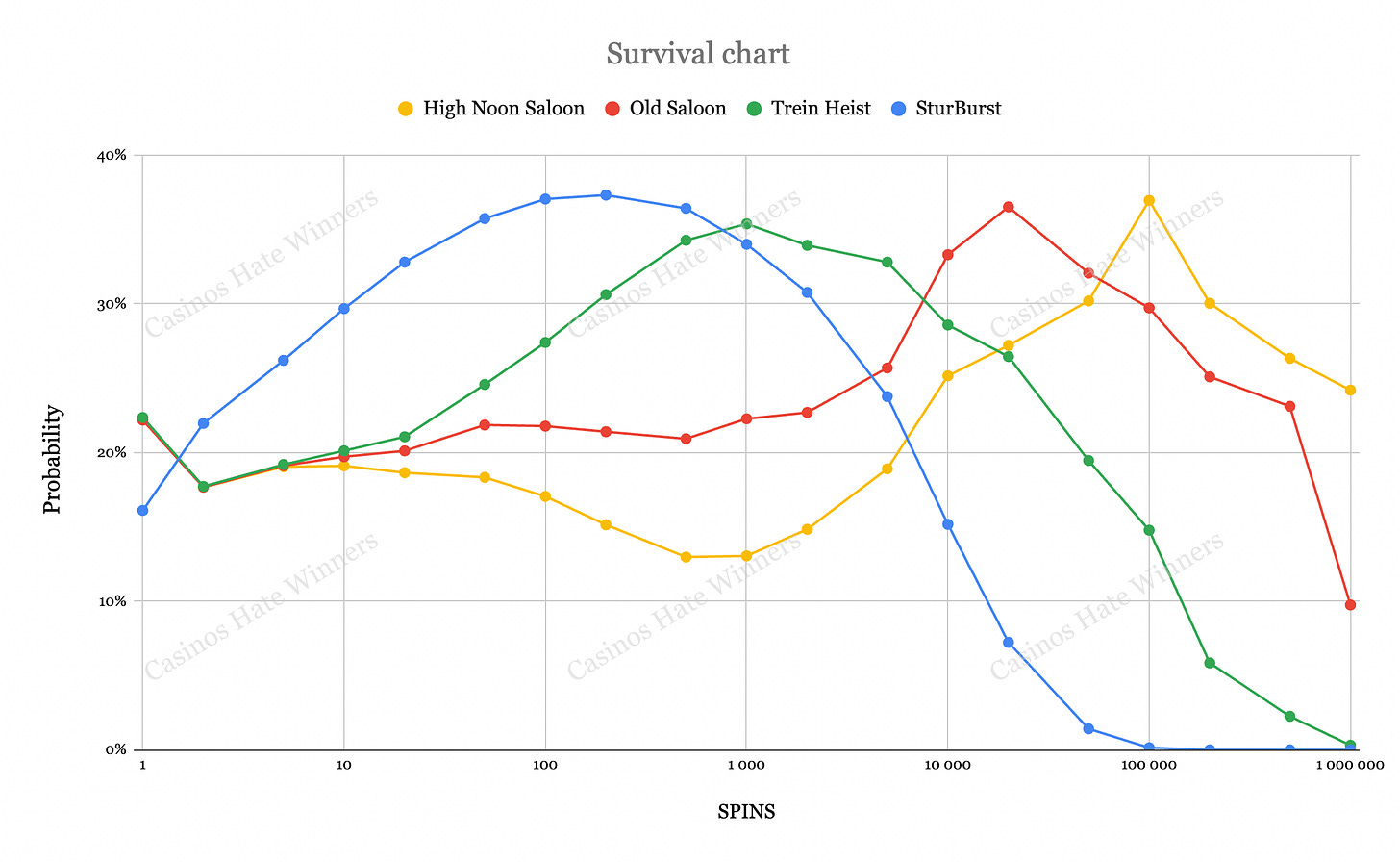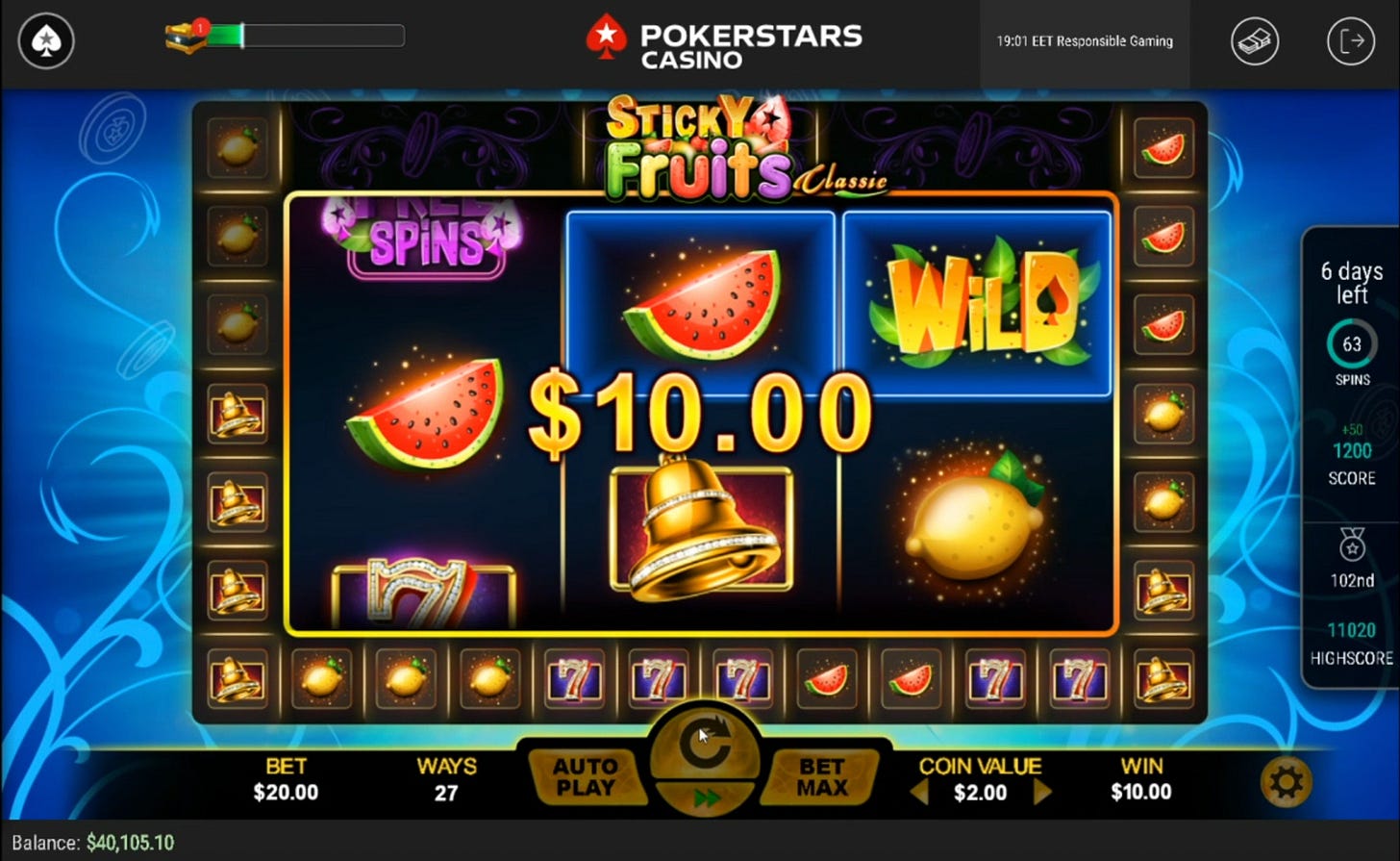Advantage Play in Slots. +$1,8M in 14 Months. Part 2
The next chapter in the slot story, this time with real competition
Riding the Wave of the First Victory
After the first race I rested on my laurels. We won $230,000 in just a few days of play and broke our own record.
Before that our best was $93,423 in a single evening while clearing a $500 deposit bonus. I will definitely write about that later, and for now you can read where the positive EV in deposit bonuses comes from or how I managed to clear 7,500 deposit bonuses worth 25 percent each.
The only question that mattered to me was whether there would be another race.
As you can already guess from the title of this article, there was.
The Second Slot Race. Competition
The announcement appeared in late October 2020, one week before the start. On November 5 at 6 p.m. the race began. This time we started playing immediately, putting everything we had into it.
The main change was that the minimum bet was cut in half. For us this meant the same prizes with half the costs and lower risk.
At the same time the barrier to entry dropped, and more players joined. It seemed that many realized that with these prizes playing Dead or Alive 2 had become obscenely profitable. Even streamers broadcast the race on Twitch.
Fortunately they did not use autoclickers and made fewer spins per minute. Unfortunately the number of competitors increased dramatically. In the first race there were almost none or they simply had no luck, but now they were going all out.
It is worth adding that within the slot community and among streamers Dead or Alive 2 is known for its volatility and huge potential wins. On YouTube you can even find videos of players hitting 111,111x from a single base game spin without buying a bonus. I am not sure that everyone understood the exact math, but many trusted their intuition and it served them well.
In the first days of the race my friend hit a 13,353x multiplier, almost identical to the one from the first race that secured us first place. This time it was only enough for second. The top score was already 23,700x and several players in the top had more than 10,000x. The bar had been raised.
I myself hit 18,659x, improving our results, but the leader already had 28,509x. Taking first place had become far more difficult.
In the end we finished 3rd and 4th, winning $50,000 and $40,000. Adding the slot winnings and several smaller prizes the total was a little over $150,000.
This showed that luck was now as important as math. We had made hundreds of thousands of spins and still finished ahead. In a low volatility slot this would have been impossible. I explained this in detail in my article about volatility.
In Dead or Alive there is a 24,2% percent chance of finishing in profit after one million spins.
Even without the prize money we would have won. We were lucky to fall into the category of players who ran well.
Still we understood that relying on the slot itself to remain profitable was foolish. Sooner or later math takes over. The only way to win is through the prizes.
The Third Slot Race. Bots
The third race started on December 3. We invited a few more people we could trust. Now there were seven of us, but the number of competitors had multiplied as well. The results looked unbelievable. Someone hit the maximum win of 111,111x, which has a probability of one in 42 million.
Across the three races we had made a maximum of two million spins combined. Our best result was 37,801x, which has a probability of one in three million. In previous races that would have been first place by a mile, but here it was only good for fourth.
For reference, second place was 65,329x (one in ten million) and third place was 44,847x (one in 4.5 million).
These results could not be explained by luck. The probability that three random players in a row would hit such multipliers is essentially zero. That meant there were hundreds of such players.
I do not know if they were real players, money mule accounts, or someone activating an army of bots. The outlook was unclear. In that race we won a miserable $16,000. At that point I had no idea what to do next. Playing under such conditions hardly made sense.
The Fourth Race. Cheating
One week after the end of the second race they announced another one to run from December 24 to 31. A smart marketing move, since during the holidays people spend more.
Another important detail was that as soon as the announcement appeared the list of available games was shown. Dead or Alive 2 had been removed. Apparently someone did not like the fact that all the winners came from a single game. We had no plan B.
I desperately scrolled through the list of available slots trying to find something promising. I built a Google Sheet listing the maximum wins in each slot. I marked volatility as well, but providers do not publish exact numbers, only words like “high” or “low.”
My friend searched YouTube for replays of big wins to see what was possible and tried to code something that would gather this data empirically. At the same time I looked for someone who could write a script to simulate millions of demo spins so we could know the actual odds.
The best idea we came up with was Legacy of Dead on one line, with a maximum win of 5,000x. We roughly estimated the number of wild symbols on each reel and multiplied the probabilities to get a sense of what was theoretically possible. But very quickly it became clear that something was wrong. Other players were hitting 10,000x and higher. Among them were the same nicknames that had appeared in the earlier races. We tracked the top 100 places and saw repeats.
So we started checking all the slots again and again. Eventually we found one: Sticky Fruits Classic, which had a broken mechanic. To activate the bonus you needed to collect 24 symbols, mostly fruits, bells, and sevens. You could play at the maximum stake of $20, and when you were close to completion you could drop the stake to $0.50. The bonus was calculated on the average bet. This meant the bonus was triggered at $0.50 but the win was paid out on an average stake, usually around $19.
That way we hit 3,200x several times. At the time we still did not understand how others reached more than 10,000x. We were not even sure it was the same slot. The realization came during the 13th race when the slot reappeared. It was cheating on top of cheating. In the end we finished 19th and 20th, winning about $10,000.
The First Real Data
The good news was that I managed to find someone who could run five million demo spins and collect the results. The slot was Twin Spin Deluxe from NetEnt. For some reason I thought it had big potential. The results showed otherwise. The best it could deliver was 1,000x once per million spins. By comparison, in Dead or Alive 2 you can expect more than 22,500x once per million spins.
The Fifth Race. Triumph
By the fifth race we were truly ready. This was one of my favorite races, with minimal stress and maximum reward. In Emerald King Rainbow Road the maximum win of 20,000x occurs on average once every 402,928 spins. The RTP is 96.71 percent. The minimum stake for the race was $0.50, but the slot only offered $0.40 and $0.60, so we had to play at $0.60.
402,928 multiplied by the house edge of 3.29 percent and by $0.60 equals $7,953. That was the expected cost to reach 20,000x and the top places on the leaderboard. Sticky Fruits was excluded from the race. We could only hope the competitors did not figure out the same strategy.
We were lucky to hit a max win in the first two hours after the start. In the end we landed three of them and finished 1st, 2nd, and 4th. The total was over $200,000.
Here is an interesting fact for fans of gambling conspiracy theories. Many players believe that in new slots the odds of winning are higher right after release. The claim is that developers tweak the game to pay more often and generate hype.
This slot was released on January 18, and the race began on January 28. We won three max wins without even coming close to the expected 1.2 million spins, which seems to support the theory. Considering that Pragmatic Play had already been caught in a scandal involving progressive jackpots before its rebranding, this theory may look even more convincing.
Personally I believe it was nothing more than variance and chance. What do you think?
If you enjoyed this article you can subscribe for free or paid content, share it with friends, leave a comment, or at least give it a like.





